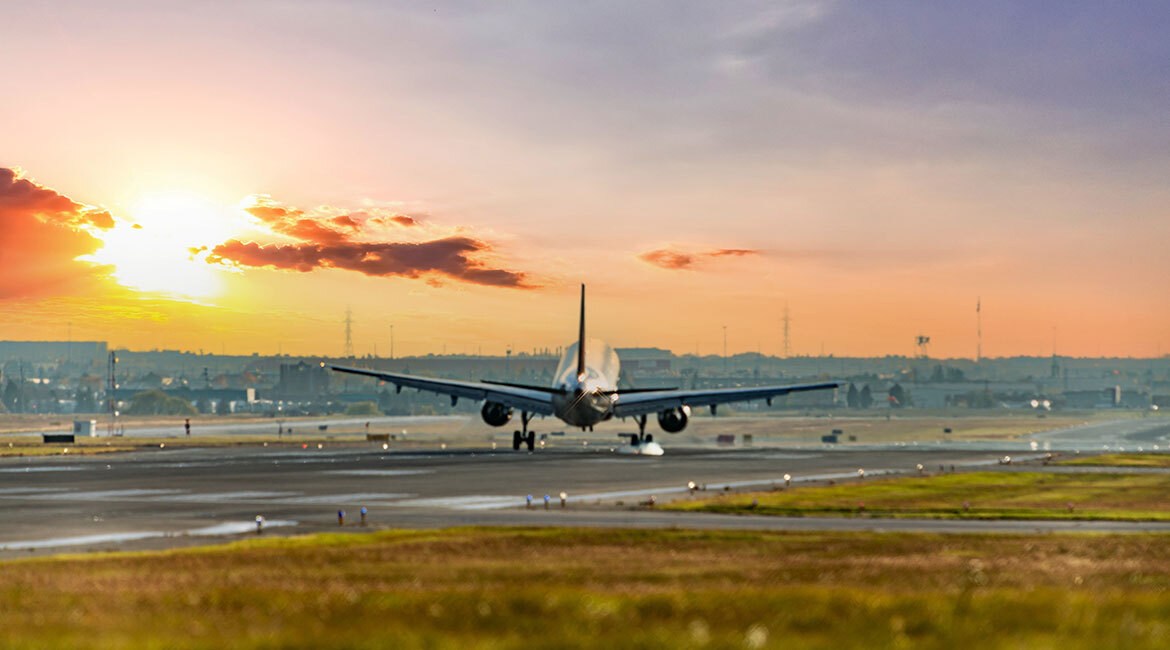Using artificial intelligence (AI) in aeronautical engineering is relatively recent. In 2020, Airbus launched the first aircraft that can take off automatically using computer vision. ÉTS Professor Georges Ghazi is at the forefront of research in this field.

“It’s a fairly conservative environment,” he notes. Everything has to be certified because of the amount of work to be done and safety issues. You can’t innovate on the spot like in the military, but the approach is starting to attract industry interest.”
Professor Ghazi is working on a project to ease the workload of air traffic controllers, including limiting the stress levels these individuals face on a daily basis.
“We are developing tools and methodologies to optimize aircraft ground trajectories while avoiding collisions. Currently, the control tower is responsible for this task. We aim to offer AI-based decision support tools to manage all aircraft movement on the ground. Here, the controller becomes a supervisor, and if all goes well, the AI can be allowed to fulfill its role.”
In an airport, an agent (assigned to each aircraft) could be compared to a robot that moves from gate to runway while avoiding collisions. Imagine that AI could control all the agents (i.e., all the aircraft) to ensure that each one moves optimally and safely while exchanging information with the others.
“We tend to overlook what happens on the ground with the aircraft, but when looking at operations over a full year, fuel savings become significant. Optimizing ground operations reduces fossil fuel use and the environmental impact on the population surrounding airports.”
No More Lineups
By cutting down on the common practice of flying aircraft in circles while waiting for a runway, AI will benefit travellers who want to reach their destination quickly.
“We want to avoid lineups that slow down ground traffic and increase harmful emissions. AI will calculate the shortest and fastest route, allowing an aircraft to use the least fuel.”
Georges Ghazi believes that the complexity of airport facilities should not prevent innovations that could benefit everyone. “It’s on the ground level that we must show the general public and industry that all travel can be automated.”
AI installed in every aircraft won’t solve the problem of all aircraft travel. However, centralized AI could control aircraft trajectories, including the numerous service trucks on the tarmac.

“For some time now, we’ve been working with an agent trained to move between two given points. It can cover the entire airport, always using the shortest route. It is given choices; it calculates and can choose the right direction. We even started simulations with several aircraft that interact with one another. We should be able to demonstrate that, even in extreme cases, agents can make the right decisions.”
Reinforcement Learning
Professor Ghazi and his team use reinforcement learning to do this. From this, the researchers analyze each decision made by the AI to determine whether it was the right option.
“If it’s right, we give a reward—if not, we give a penalty. The game aims to get our agent to take actions that will earn it rewards and help it improve. The algorithms allow the agents to increase the right actions and rewards. It takes thousands of simulations to get each agent to perform the right actions in collaboration. The advantage of reinforcement learning is that the AI can learn and correct from its mistakes.”
The aim will always be to demonstrate that AI is a tool like any other in improving performance, especially considering traffic saturation in airports. The research is based on a multidisciplinary approach with the contribution of specialists in air traffic control, optimization, management, certification, and safety.

“What’s great about ÉTS, concludes Georges Ghazi, is that we are surrounded by great professors in aeronautics who share a lot of expertise. We are in an environment where we are comfortable with technology, which allows us to move things forward more quickly.”



